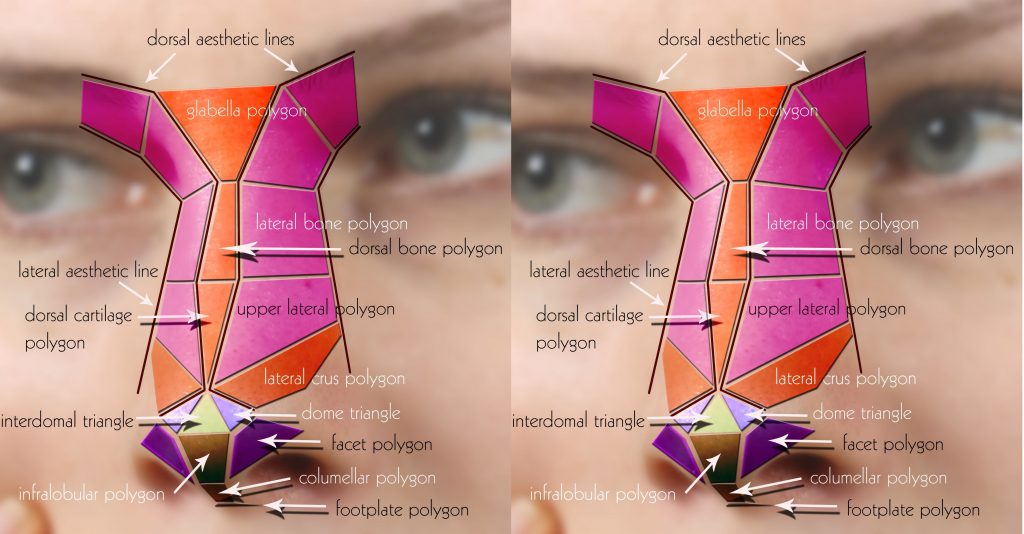This week, I will share with you the news about our article in the “Aesthetic Surgery Journal”. It will be one of the scientific steps towards Turkey having more say in rhinoplasty surgery.

Polygon Rhinoplasty
Cubism in Nose Aesthetics
The article Surface Aesthetics And Surgical Techniques was published as a “special topic” in the March issue of ASJ magazine. This article is an article that brings together art and rhinoplasty. Nose surface aesthetics are examined with polygons, that is, cubic forms.
What is Polygon Rhinoplasty?
Polygon rhinoplasty is the rhinoplasty of the nose with the knowledge of painting. Polygon is the general name for shapes with more than one side. Like triangle, rectangle, trapezoid, pentagon.

Why Do We Analyze With Cubic Forms?
When you draw organic objects with cubic forms and soften the edges, the picture emerges. Nasal cartilages are more angular structures and the nasal skin softens the edges of the cartilages. The nose skin acts like the painter softening the cubic forms. When an artist who knows the anatomy of the nose draws the nose with cubic forms, he actually draws the anatomy of the cartilage. Thus, it is possible to draw the cartilage anatomy of a flawless nose without plastic surgery in 4-5 minutes. One of the secrets of closed technique rhinoplasty is to be able to read the surface of the nose.
Çakır Poligonları Ne İşe Yarar?

Can Anyone See the Polygons?
Those who take pattern training already see it. But I can make sure you see it too. In organic models, the surface anatomy is very detailed and complex. When the light source is stationary, walking around the object and recording the reflected light and shadows in your brain, you begin to see cubic forms. By relocating the light source and moving around it, you see more detail. Stand in front of a friend whose nose you like very much, squint your eyes, try to see the lights shining on the nose, determine the shape of the light, notice how the light moves, thicken and thin, move your head slightly and watch the changes in the lights. Create triangles and quadrilaterals from the shapes drawn by the light and now… you begin to see polygons.